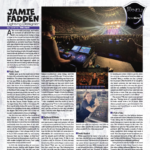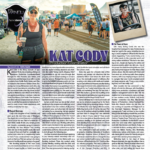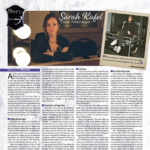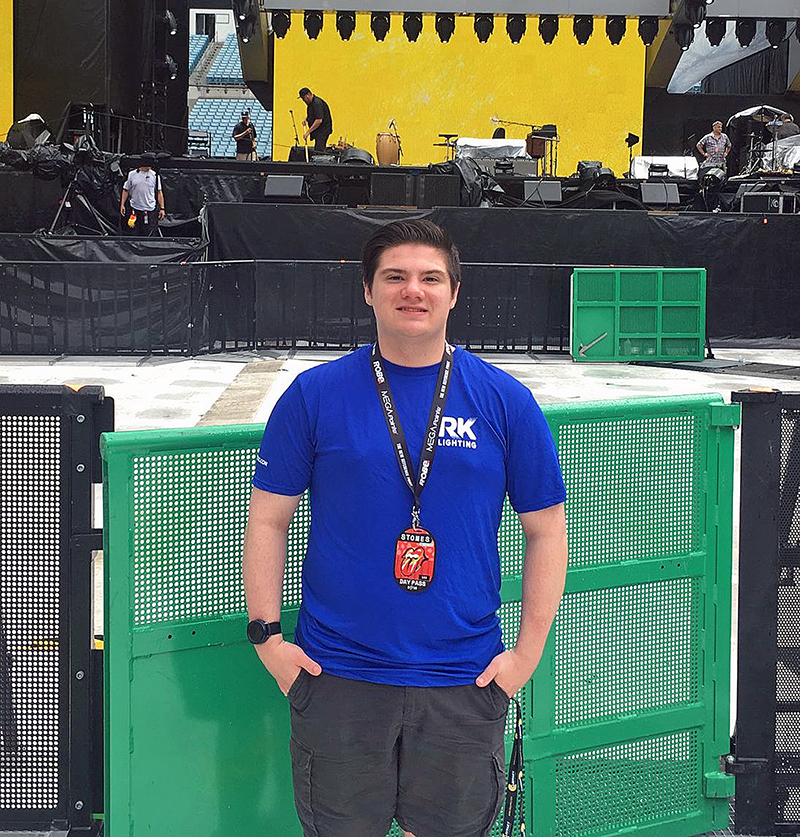
In PLSN’s continuing quest to find tomorrow’s next hip lighting designer, production manager or noticeable person in the live event industry on their way to becoming a Parnelli Award winner, we were introduced to Ryan Kasko. Ryan is a 17-year old junior at Downers Grove North High School in Illinois. But don’t let that age fool you, he’s been into lighting for the last 12 years.
Ryan’s parents have always played in bands, more specifically as a local band in the Chicago area that entertained at events such as weddings, corporate functions and local festivals. Ryan would tag along. He’s quick to state, “I never liked kid’s music. By the time I was two, I was listening to Rush and Tool.” The parents had a storage space they used to store their gear in between shows. The kid was four years old when his parents stopped in one day. The youngster started crawling through the pile of stuff and emerged with eight shiny objects that had caught his attention. They were ADJ silver Par 36’s that his folks used for stage light.
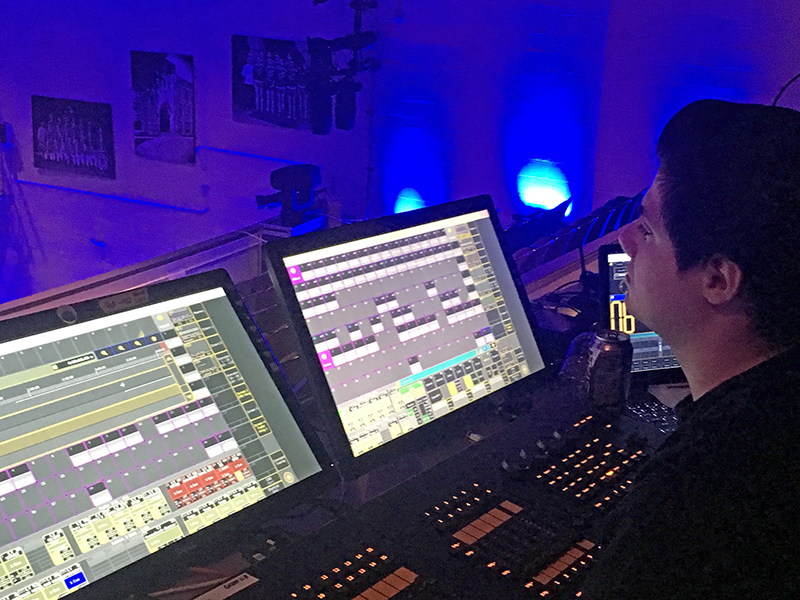
As the story goes, Ryan’s first light show was a fundraiser for missing person Stacy Peterson, when he was five. Karl Cira of KC Audio, the sound company owner, was babysitting him by the soundboard while his mom emceed the show. Ryan asked him what the light console was. Carl took off the cover and let him play with it. By the time bands came on stage later that day, Ryan was running light shows for them. Karl said the acts wouldn’t believe him if he told them their lighting was being run by a five year old. According to his mom Lisa Rene Kasko, “That’s when Ryan officially transitioned from loving traffic lights to loving stage lighting.”
As he grew, he kept requesting lighting fixtures for Christmas. His parents eventually purchased some Chauvet DJ gear and ADJ lights. By the time Ryan was seven, his parents agreed that Ryan was ready to do shows for their band and hired him to do lighting for their upcoming festival season. But he admits, “I ran these from the MyDMX app that ADJ offered. I started bringing a small setup of Guitar Center lights to do shows. Then it just grew.” He did a great job during festival season, and since they needed an LD for their wedding gigs, they hired Ryan for these shows. His parents decided it was better to take Ryan on the shows and pay him to LD rather leaving him with a sitter until 2 a.m.
“From here, I moved up to some little LED spots that ADJ was offering, and I upgraded to the Elation Compu Show PC platform for control. This allowed me to connect a MIDI controller to it, so I had a basic light desk now,” Ryan says, while all this time still making use of his parents old pars and dimmers. “I eventually replaced them with some Blizzard LED Pars that still work great to this day.”
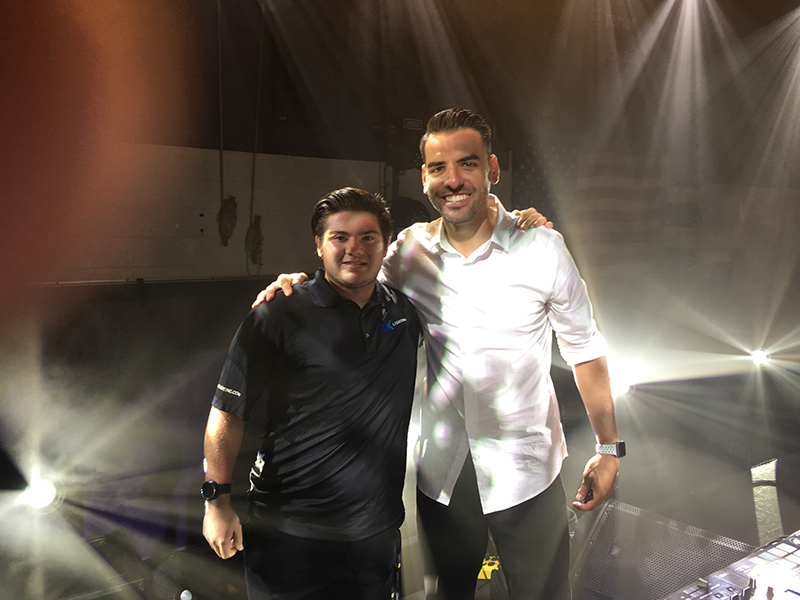
Dewey, Ryan’s dad, chimes in. “We come from a family of gear heads,” he says. “We both play drums,” and Ryan also plays guitar. “I work with audio, but Ryan was drawn to the lighting side. The gear was all used for the band, so we just kept raising the level of our production. By the time he was ten,” Dewey continues, “he was getting requests to do bridal shows, then that advanced to school dances.” By the time he turned 11, Ryan started lighting corporate shows.
Although he started working at seven, by the time he turned 11 he was getting paid professionally for his services. “We had played for some corporate client/friends,” Dewey says, “and one of them noticed Ryan’s work. She asked if he could light a corporate show for 500 people at the Drake Hotel in Chicago.” Ryan expands, “I chose to do a lot of uplighting on the walls and brought in what we had. We had moved up to Elation Platinum Spots and 5R fixtures by then.”
In grade school, Ryan started designing his school’s variety show. “I started donating time to the school talent show. I wanted to bring a little rock star quality to the show,” says Ryan. We asked Ryan if he was involved in the theater program at his school. “I worked on two musicals in junior high. I designed and hung all the lights, then I worked with a director on the cueing.” Ryan found this a little boring, and he continued working on school variety shows, even working on Downers Grove North’s variety show when he was still in junior high.
Moving upwards, Ryan knew he needed a better controller, so he opted for an LSC Clarity desk. It was his first console with a fader wing and flash buttons. “This exposed me to the professional way of programming. I learned about cue lists, preset palettes and FX engines. This all came in handy when I transferred to the MA console later on.” Today the grandMA2 is his board of choice, but he’s learning the MA3 platform. He uses the Onyx and the ChamSys Quick series as well when applicable.

Peers
“I really got interested in lighting by messing with par cans. Then I saw Rush playing on the Snakes & Arrows tour. I was introduced to Howard Ungerleider by a friend of my dad’s at the United Center in Chicago. Howard brought me up to the lighting riser for a picture and then he offered for my dad and I to sit on the riser for the rest of the show. I watched as he played the console like a keyboard. I just wanted to learn so much more from him.” Over the years, Ryan attended more Rush concerts and got to spend more time talking lighting with Howard, who was always impressed with Ryan’s knowledge.
“I attended a Green Day show when I was 11 (in 2014) and eventually met Ethan Weber, their LD. He made time to talk to me over lunch. The next thing I know, he’s invited me to Detroit in 2015 to shadow him for a day and half while they set up and did a Rolling Stones show. He actually recommended I come. I spent that time working with the crew, learning the biz. What Ethan showed me that was so important was the right way to treat people, and how to approach your job as a crew chief. He taught me so much great stuff.”

Designing Shows
Each year, Ryan’s hometown of Downers Grove throws The Rotary Grove Fest. Last year, Ryan decided he wanted to donate his company’s gear and time. “It’s usually a small stage and the sound company would use 24 pars to wash the stage with light. Last year was the 10th anniversary of the event, and they actually brought in a Stageline SL250 mobile stage. So we volunteered and got to give back to our town. Some of the bands playing had LDs, but I got to run lights for all the ones who didn’t.” His first festival rock show design was a success.
Ryan’s company is called RK Lighting now. While they own their fair share of fixtures and truss, they will sub-rent motors from another local vendor when necessary. “For this show, we were able to load in the lighting system the night before. I had six Vipers, 12 Sharpy washes, 12 Blizzard Pars and some of my new favorite lights, the Chauvet DJ Intimidator Hybrid 140SR. We hung the lights right from the roof and cabled them, before lifting it. This year, we were going to have to load the stage in the day of show, so motors and truss would have been necessary.
“Since I had been working with my high school since I was in eighth grade doing variety shows, school assemblies, and holiday productions, my company finally got hired for the school’s annual Homecoming Dance. RK Lighting produced the entire event, bringing in all the lighting in addition to all the staging, sound, and even hiring the DJ. While this was being prepped, we also had a large rental for the school’s variety show the night before load-in. It was stressful, but both shows looked great.”
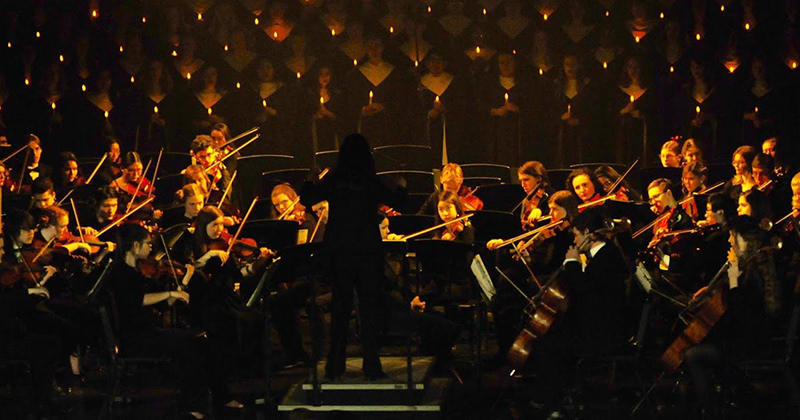
The Mosaic show is a large 90 minute, non-stop music presentation that takes place in the 360° space of an auditorium. People come from all over the Chicago area to attend. Ryan got an S.O.S. call from the fine arts director for the annual event during his freshman year, saying the usual director wasn’t going to be available for the show. Ryan took it on, knowing he only had 10 days to pull it off. Twelve to 16 hour days were required, but the show was a huge success. Ryan has designed the show now for the last three years.
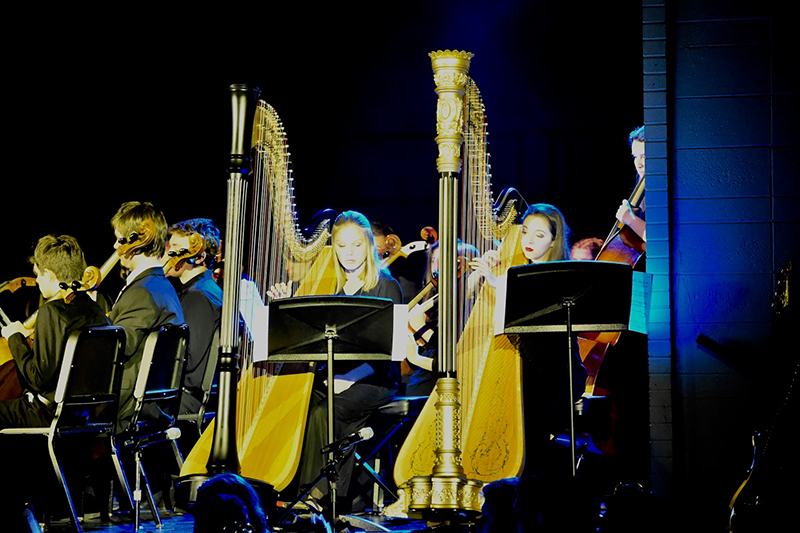
“The school band, combined school orchestras and a huge choir play at different times in different sections of the house. One minute I may be lighting an orchestra and choir, then the next cue features a five-piece woodwind ensemble that needs to be lit in a balcony somewhere. The Claypaky Alpha Profile 800 is my main key light of choice for this year’s event. We used up lighting to wash the walls as well as our Hybrid 140s so I could splash a gobo on them easily enough when needed. The music styles were diverse as well. I had an electronic piece that I lit utilizing timecode as well as a coordinated light show for a Tran Siberian Orchestra piece played live by the orchestra and triggered live by me.”
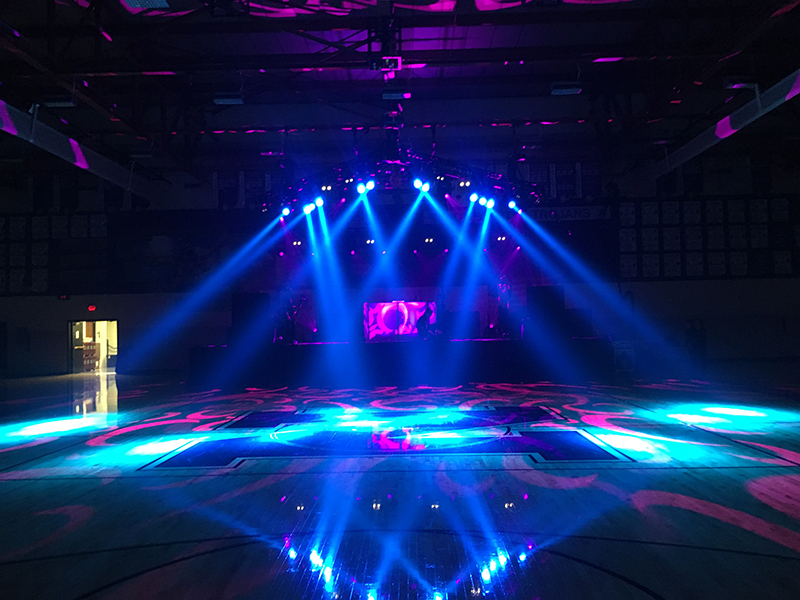
We asked Ryan what he uses to draw his plots. “I like to use Capture. It’s a lot easier than Vectorworks for me, and I was able to use it as a previz program for years when I was using the Clarity console, before the MA visualizer was available to me. I still use it to this day for my light plots, and it’s solid. I can load the file right into my desk.”
Recently, RK lighting had been doing 20-25 shows per year, and they are a rental house as well. PLSN asked Ryan what his plans are after high school. “I really want to design a show with a ground package and tour with it.” But he does admit that a secondary education might be a good idea. “I’m only a junior, I don’t really know yet. It could be the University of Texas at Austin, could be a summer internship at Upstaging. Ethan Weber recommends both. He’s a pretty smart guy.”
